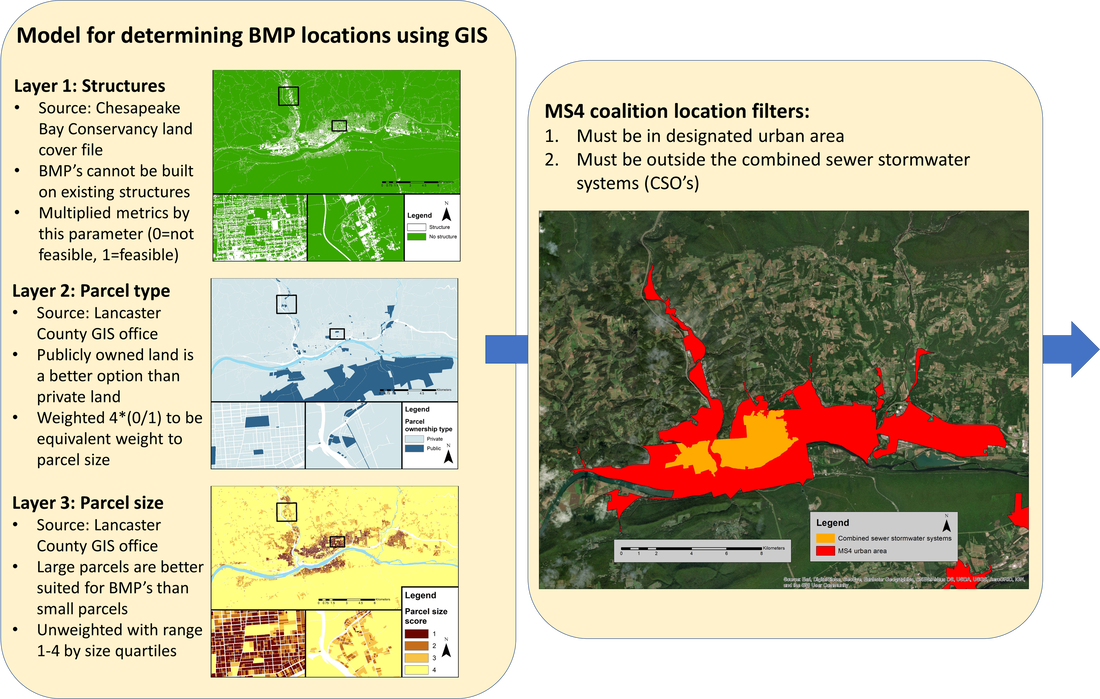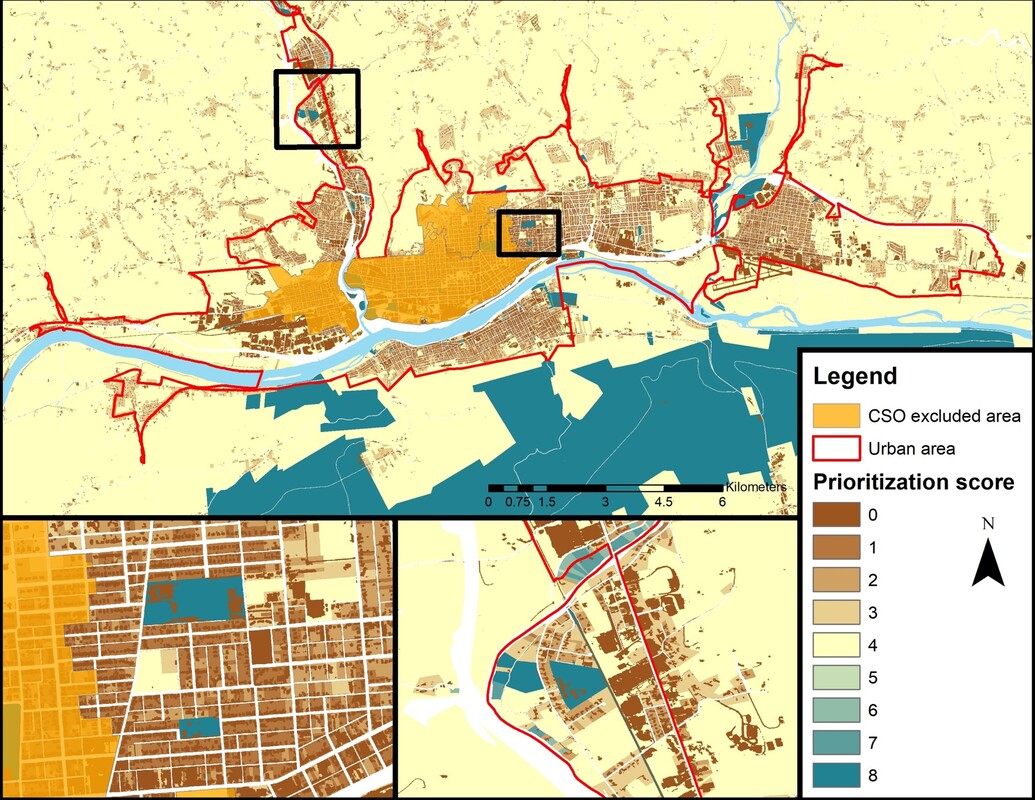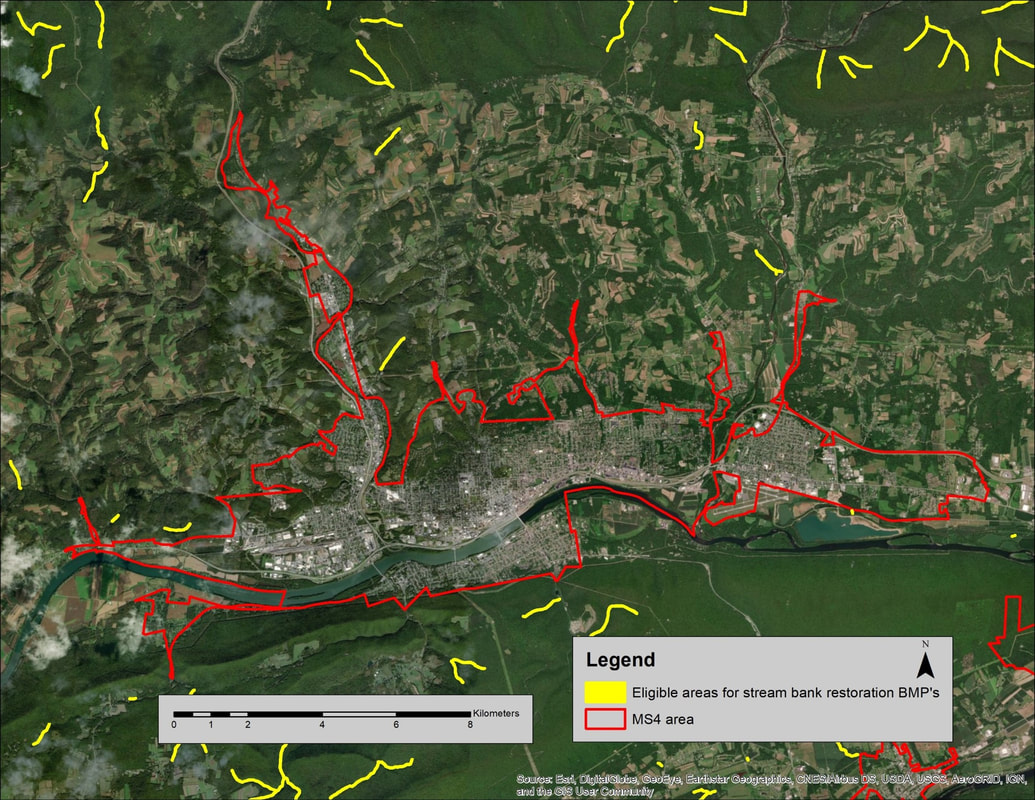The project's overall goal is to create a college community stormwater partnership; but what does that mean?
The National Pollution Discharge Elimination System (NPDES) includes stormwater as a point source pollutant discharge. One of the conveyance systems for stormwater are municipal separate storm sewer systems (MS4s). The entities that own or manage MS4s (i.e., the operators) are required to obtain NPDES permits and also develop a plan to mitigate stormwater inputs (a 'stormwater management plan'; SWMP). This requirement has posed a unique challange for small municipalities that often lack the expertise and/or resources to satisfy these regulatory requirements. This project's goal is to create a framework for small colleges to work as partners with small municipalities to provide assistant to help small municipalities overcome barriers to obtaining permits and developing effective SWMPs.
We identified 3 broad needs for small municipalities (such as Williamsport, PA - the home of Lycoming College) to meet federally mandated stormwater management requirements.
Some of the current projects underway to address these overall objectives include:
The National Pollution Discharge Elimination System (NPDES) includes stormwater as a point source pollutant discharge. One of the conveyance systems for stormwater are municipal separate storm sewer systems (MS4s). The entities that own or manage MS4s (i.e., the operators) are required to obtain NPDES permits and also develop a plan to mitigate stormwater inputs (a 'stormwater management plan'; SWMP). This requirement has posed a unique challange for small municipalities that often lack the expertise and/or resources to satisfy these regulatory requirements. This project's goal is to create a framework for small colleges to work as partners with small municipalities to provide assistant to help small municipalities overcome barriers to obtaining permits and developing effective SWMPs.
We identified 3 broad needs for small municipalities (such as Williamsport, PA - the home of Lycoming College) to meet federally mandated stormwater management requirements.
- Municipalities typically lack the expertise and resources to perform this work on their own, and in some cases, to select effective partners to develop plans.
- Municipalities were resistant to SWMP development due to lack of funds, public perception, a desire to use resources for projects that were perceived to have greater benefits, etc.
- Undergraduate students, who would potentially find a job as a town manager, engineer, etc. tasked with making these decisions were not receiving this type of applied training in standard college curricula
Some of the current projects underway to address these overall objectives include:
- Examine myths and misunderstandings of MS4 compliance
- Develop a system to locate and prioritize potential BMP locations for small municipalities
- Generate a stormwater curriculum
GIS-based prioritization system for small municipality MS4 compliance projects
Federal regulations require small municipalities to manage stormwater transported through municipal separate storm sewer systems (MS4). Suitable project locations for best management practices (BMPs) to fulfill MS4 requirements can be difficult to identify, especially for small municipalities with limited resources. We are creating a GIS-based project prioritization tool for a coalition of municipalities in Lycoming County, PA, USA to aid in identifying suitable locations for BMP projects. A location suitability index is being developed from relevant federal and state regulations and local stakeholder input using landcover, parcel, hydrology, stormwater system, and other spatial data. Efforts to date demonstrate that ideal locations for BMPs are limited, especially for streambank restoration. The locations of combined sewer areas excluded from load calculations also substantially limit project options.
BACKGROUND
METHODS
Conceptual development (based on)
BACKGROUND
- The Clean Water Act requires municipalities to manage point source discharges of pollutants, including stormwater systems (i.e., Municipal Separate Storm Sewer System; MS4)
- Approaches for complying with federal regulations can be difficult for small municipalities
- Determining what Best Management Practices (BMPs) to implement can be costly and difficult
- A system for identifying and prioritizing locations for solutions can save municipalities money and resources
METHODS
Conceptual development (based on)
- MS4 program requirements
- Discussions with local municipalities
- Case studies and empirical evidence on project effectiveness
- Publicly available remote sensing data
- County/local government data on land parcels
- New GIS data by processing existing spatial data as needed
- Model calibration:
- Calculate metrics
- Determine metric weights (through stakeholder input)
- Ground truth results (with stakeholders)
- Revise model and repeat calibration
- Provide map of locations and analysis of management approaches employed (e.g., parsed areas, specific barriers, etc.)
RESULTS
The image above is the first iteration of the model:
The image above is the first iteration of the model:
- Appropriate locations of stream bank restoration were rare (none in our MS4 regulated areas)
- Majority of land in the urban area had low suitability for upland stormwater BMPs
- Private ownership and small size of parcels were important limitations
- Parsing out areas to reduce load calculations limited available locations for BMPs
- Small BMPs are more feasible than large BMPs
- Stakeholder input and iterative model calibration is key
- Ecological improvement is often not an important metric to local municipalities
- Manager expectations don’t match reality of most feasible and effective options
|
Final map showing all areas inside the Urban MS4 area and outside the combined sewer stormwater systems. The prioritization score shows how ideal the location is for BMP’s with 0 being the worst and 8 being the best.
|
Map showing areas that qualify as potential locations for stream bank restoration around Williamsport, PA.
|


